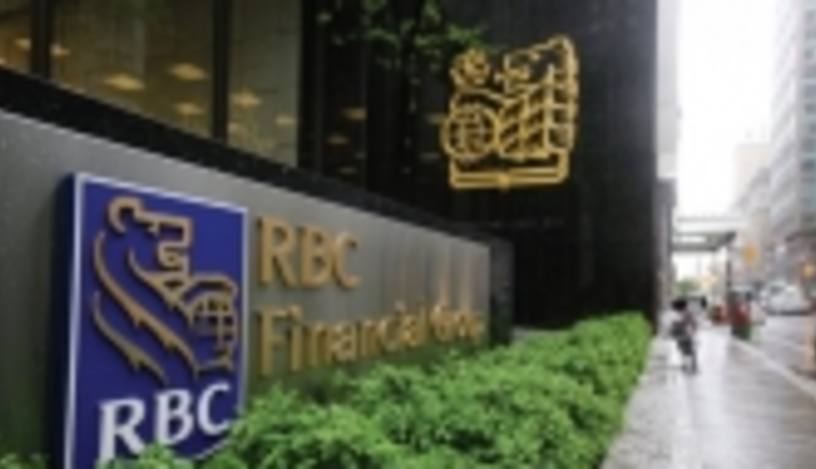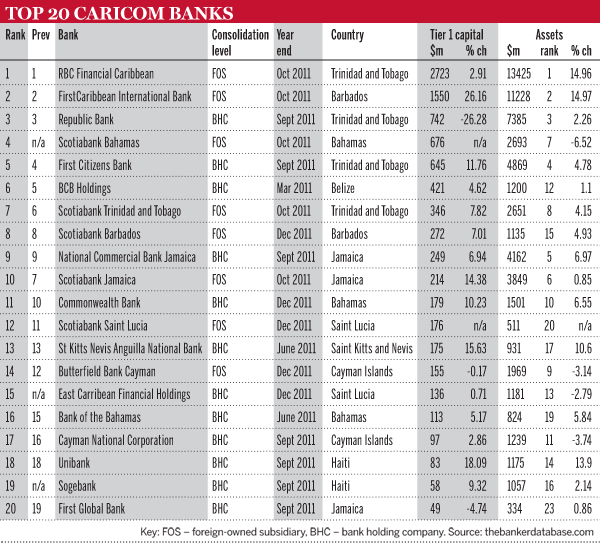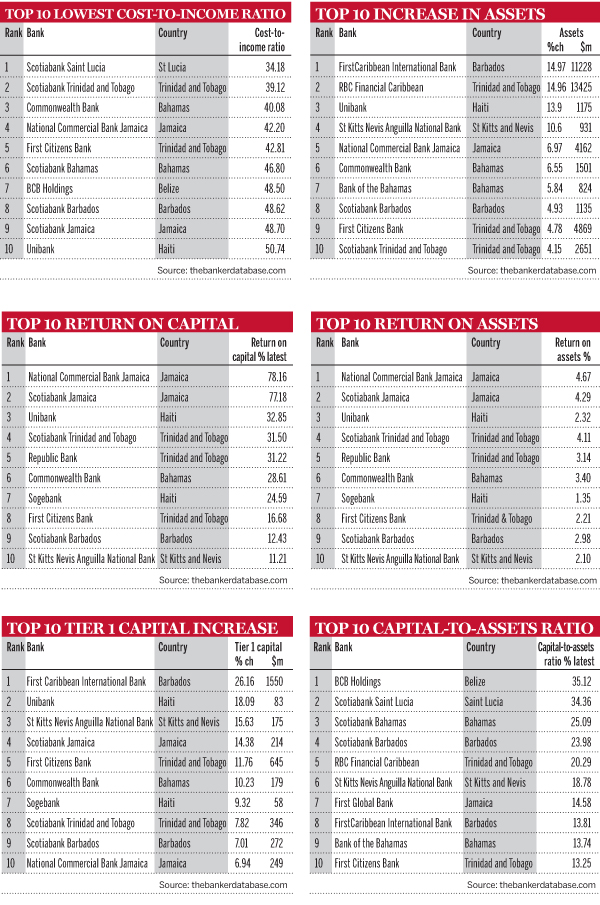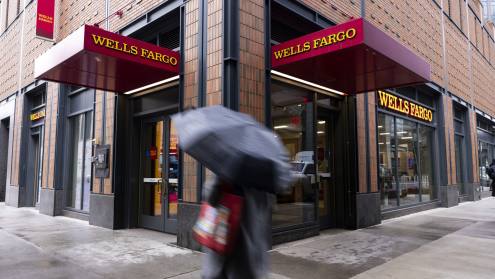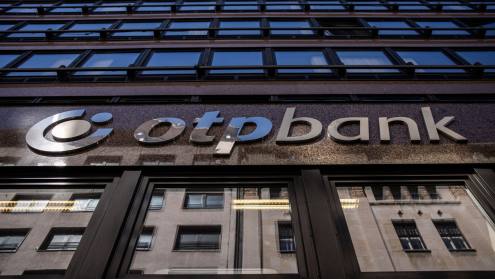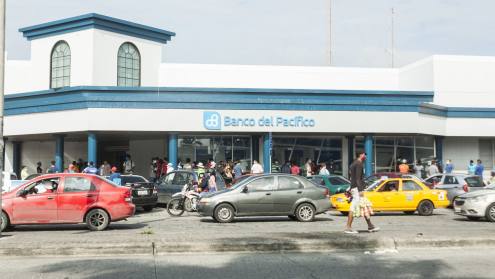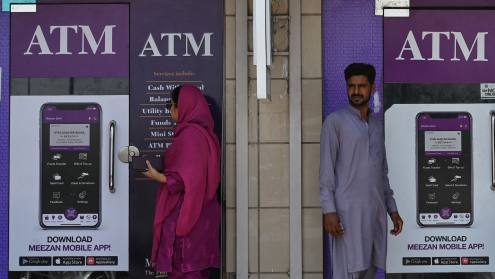The Caribbean Community (Caricom) is undergoing what may be its toughest economic cycle in decades, with gross domestic product (GDP) falling across the region, weak fiscal positions, mounting public debt and growing unemployment. In its World Economic Outlook report, the International Monetary Fund says it expects all Caribbean countries, with the exception of the Dominican Republic, Trinidad and Tobago, and the Bahamas, to have public-debt-to-GDP ratios of more than 60%.
Saint Kitts and Nevis and Jamaica have ratios significantly higher than 140%, with Saint Kitts forced to restructure its public debt earlier this year. Meanwhile, due to poor growth, there have been widespread concerns about Belize’s ability to service its $550m ‘super bond’, despite the country’s more comfortable debt-to-GDP ratio, estimated to be just under 80% at the end of 2012.
Some projections have GDP growth for the region (excluding outliers such as the Dominican Republic and Haiti, which grew at 4.5% and 5.6%, respectively) to fall short of 2.5% for this year. Unemployment rates range from more than 5% in Trinidad and Tobago to an estimated 30% in Grenada.
Looking at this macroeconomic picture, it should not come as a surprise that businesses and households are suffering too, and that consequently banks’ profitability has been falling. The top 20 lenders across the Caribbean closed 2011 with pre-tax profits of $1.15bn, a figure that is 13.5% lower than in 2011.
Bright spots
Many banks, however, have provided a good return for these investors, with National Commercial Bank Jamaica and Scotiabank Jamaica leading the group. The two banks’ return-on-capital ratio for the past year is significantly higher than others in region, at 78.16% and 77.18%, respectively.
Based on lenders’ capital strength, The Banker’s Caricom list has not changed significantly over the past 12 months. RBC Financial Caribbean, FirstCaribbean International Bank and Republic Bank still occupy the top three positions, with Tier 1 capital of $2.72bn, $1.55bn and $742m, respectively. In the case of Barbados’s FirstCaribbean, that figure was a 26.16% increase from last year, while for Republic Bank the change went in the opposite direction, with a 26.28% decrease from its previous annual financial statement.
This deterioration of capital conditions narrowed the gap with the lender in fourth place, which this year is Scotiabank Bahamas, the highest placed of Scotiabank’s Caribbean outfits. The Bahamas division of the Canadian lender is also a newcomer to The Banker’s list, thanks to the group’s higher disclosure of its regional operations – some of which were previously consolidated under other country holdings. It should also be noted that Royal Bank of Canada’s Caribbean businesses and FirstCaribbean International Bank still consolidate their regional reporting under one entity, helping them retain the lead in the table.
As challenging economic conditions have been eroding banks’ profitability and economic risks loom in the background, greater focus continues to be put on capital strength and capital adequacy for most banks. FirstCaribbean has increased its Tier 1 capital by 26.16%, the highest increase in the ranking, followed by Haiti’s Unibank and St Kitts Nevis Anguilla National Bank, which expanded by 18.09% and 15.63%, respectively. The best capital-to-assets ratio was recorded by Belize’s BCB Holdings, at 35.12%, followed by Scotiabank’s operations in Saint Lucia (34.36%), Bahamas (25.09%) and Barbados (23.98%).
Consolidated assets
Assets have not expanded much as a whole within the Caricom area, but four banks reported a double-digit percentage increase. Beside the regional top two lenders – RBC Financial and FirstCaribbean, which increased their assets by 14.97% and 14.96%, respectively – Unibank and St Kitts Nevis Anguilla National Bank expanded at a significant rate, with asset growth of 13.9% and 10.6%, respectively. The two lenders’ Tier 1 capital increases are higher than their asset expansions, something that underlines their concern with strengthening capital positions.
With lowering profits, costs should also be kept under control. Scotiabank Saint Lucia and Scotiabank Trinidad and Tobago have proved to be the most efficient businesses in the region, displaying cost-to-income ratios of 34.18% and 39.12%, respectively. They are followed by Commonwealth Bank in the Bahamas, with a ratio of just over 40%. On the other side of the spectrum are the only two lenders from the Cayman Islands present in the ranking: Butterfield Bank Cayman and Cayman National Corporation report cost-to-income ratios of 82.58% and 81.52%, respectively.
Two Haitian banks feature in the Top 20 Caricom Banks ranking. Sogebank in 19th place has a Tier 1 capital of $58m and assets of $1.06bn. Unibank, in 18th position, has Tier 1 capital of $83m and assets of $1.17bn. The Haitian lenders have both shown encouraging pre-tax profit growth of 21.92% and 18.63%, respectively. This reflects the economic recovery that the country is experiencing following its devastating earthquake in 2010. This is further reflected in its GDP growth of 5.6% in 2011 and estimated 7.8% for 2012.
Despite sustained economic performance and an estimated increase in GDP of 4.5% this year, the Dominican Republic is not represented by any of its banks in the regional list. Trinidad and Tobago continues to have the most banks in the table, with four lenders. The country is also still by far the largest contributor to the Caribbean’s earnings pot, with pre-tax profits of $504m – 44.57% of the regional total. Republic Bank is responsible for almost half of that figure, with its $231.71m in pre-tax profits, followed by Scotiabank Trinidad and Tobago with $108.89m, and then First Citizens Bank with $107.65m. The country’s aggregate Tier 1 capital value is also the highest within the Caricom area, at $4.46bn, which represents 49.2% of the region’s total. Its aggregate assets figure of $37.77bn is 44.74% of the total.
Jamaica is the second placed country in terms of aggregate pre-tax profits, while it is fourth by Tier 1 capital, behind Trinidad and Tobago, Barbados and the Bahamas. Barbados claims the second largest slice of the assets pie.



